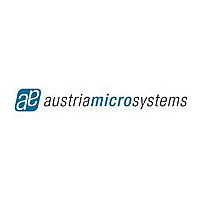AS5311-ASSU austriamicrosystems, AS5311-ASSU Datasheet - Page 14

AS5311-ASSU
Manufacturer Part Number
AS5311-ASSU
Description
IC ENCODER LINEAR 20-TSSOP
Manufacturer
austriamicrosystems
Type
Linear, Rotary Encoder - Programmabler
Datasheet
1.AS5311-ASST.pdf
(24 pages)
Specifications of AS5311-ASSU
Voltage - Supply
3 V ~ 3.6 V, 4.5 V ~ 5.5 V
Current - Supply
21mA
Current - Output (max)
4mA
Output Type
Digital, PWM, 12-Bit Serial
Operating Temperature
-40°C ~ 125°C
Package / Case
20-TSSOP (0.173", 4.40mm Width)
Lead Free Status / RoHS Status
Lead free / RoHS Compliant
Sensing Range
-
Features
-
AS5311
Data Sheet
7.4 Absolute Output Jitter and Hysteresis
Note that there is no hysteresis or additional filtering at the absolute output. This allows a determination of the
magnet’s absolute position within one pole pair down to submicron range.
Due to the intentionally omitted hysteresis and due to noise (e.g. from weak magnetic fields), the absolute output
may jitter when the magnet is stationary over the chip.
In order to get a stable 12-bit absolute reading, two common methods may be implemented to reduce the jitter.
7.4.1
The hysteresis feature of the incremental outputs is described in 7.2. An equivalent function can be implemented
in the software of the external microcontroller. The hysteresis should be larger than the peak-to-peak noise
(=jitter) of the absolute output in order to mask it and create a stable output reading.
Remark: the 2-bit hysteresis on the incremental output (=3.9µm) is equivalent to a hysteresis of 8LSB on the
absolute output.
7.4.2
Another useful alternative or additional method to reduce jitter is digital filtering. This can be accomplished
simply by averaging, for example a moving average calculation in the external microcontroller. Averaging 4
readings results in 6dB (=50%) noise and jitter reduction. An average of 16 readings reduces the jitter by a
factor of 4.
Averaging causes additional latency of the processed data. Therefore it may be useful to adjust the depth of
averaging depending on speed of travel. For example using a larger depth when the magnet is stationary and
reducing the depth when the magnet is in motion.
7.5 Z-axis Range Indication (“Red/Yellow/Green” Indicator)
The AS5311 provides several options of detecting the magnet distance by indicating the strength of the
magnetic field. Signal indicators MagINCn and MagDECn are available both as hardware pins (pins 1 and 2) and
as status bits in the serial data stream (see Figure 8). Additionally the LIN status bit indicates the non-
recommended “red” range. The MAGnitude register provides additional information about the strength of the
magnetic field (see Figure 9).
The digital status bits MagINC, MagDec, LIN and the hardware pins MagINCn, MagDECn have the following
function:
Table 5. Magnetic Field Strength Red-Yellow-Green Indicators
www.austriamicrosystems.com
Mag
All other combinations
INC
0
0
1
1
1
Status Bits
Adding a Digital Hysteresis
Implementing Digital Filtering
DEC
Mag
0
1
0
1
1
LIN
0
0
0
0
1
>5F hex
<20 hex
20 hex-
3F hex
3F hex
3F hex
5F hex
M11..
MAG
M0
INCn
Mag
Off
Off
Off
On
On
n/a
DECn
Mag
Off
Off
Off
Off
On
n/a
Revision 1.04
Description
No distance change
Magnetic input field OK ( GREEN range, ~10…40mT peak
amplitude)
Distance increase; this state is a dynamic state and only
active while the magnet is moving away from the chip.
Magnitude register may change but regulates back to 3F hex.
Distance decrease; this state is a dynamic state and only
active while the magnet is moving towards the chip.
Magnitude register may change but regulates back to 3F hex.
YELLOW range: magnetic field is ~3.4….54.5mT.
The AS5311 may still be operated in this range, but with
slightly reduced accuracy.
RED range: magnetic field is <3.4mT (MAG <20) or >54.5mT
(MAG >5F).
It is still possible to operate the AS5311 in the red range, but
not recommended.
Not available
Hardware Pins
14 - 24











